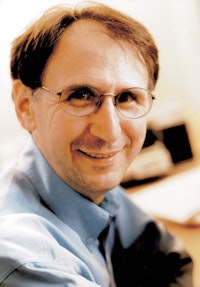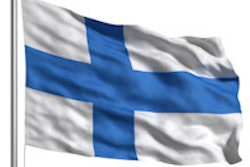
An invitation to participate in breast cancer screening reduces cancer death risk by 28%, according to a new study by researchers from Norway and published in BMJ. Mammography screening experts have called the study "thorough," "accurate," and "refreshingly free" of hysteria; an accompanying editorial, however, is not, they said.
Breast screening has been plagued with controversy over recent months. Those for and against it argue their points vehemently. Sometimes the arguments affect policy, as seen recently in Switzerland, and sometimes they do not. Each side seeks to bolster their point of view with new articles, and the latest study in favor of screening comes from researcher Harald Weedon-Fekjær, PhD, and colleagues from the department of public health at the Norwegian University of Science and Technology in Trondheim, Norway.
 The estimated benefit for breast cancer mortality associated with invitation to mammography screening indicates a substantial effect, according to Harald Weedon-Fekjær, PhD, and colleagues.
The estimated benefit for breast cancer mortality associated with invitation to mammography screening indicates a substantial effect, according to Harald Weedon-Fekjær, PhD, and colleagues.A prospective cohort study of Norwegian women was followed between 1986 and 2009. Within that period (1995-2005), a national mammography screening program was gradually implemented, with biennial invitations sent to women 50 to 69 years old (BMJ, 17 June 2014).
The researchers used multiple Poisson regression analysis to estimate breast cancer mortality rate ratios among women invited for screening and those who were not, with a clear distinction between cases of breast cancer diagnosed before (without potential for screening effect) and after (with potential for screening effect) the first invitation for screening.
"We took competing causes of death into account by censoring women from further follow-up who died from other causes," Weedon-Fekjær and colleagues wrote.
The researchers used the Cancer Intervention and Surveillance Modeling Network (CISNET) Stanford simulation model to estimate how many women would need to be invited to biennial mammography screening to prevent one breast cancer death during their lifetime. This was based on the observed mortality reduction combined with all-cause and breast cancer-specific mortality in Norway in 2009.
Weedon-Fekjær and colleagues found during more than 15 million person years of observation that breast cancer deaths occurred in 1,175 women with a diagnosis after being invited to screening and in 8,996 women who had not been invited before diagnosis. After adjusting for age, birth cohort, county of residence, and national trends in deaths from breast cancer, the mortality rate ratio associated with being invited to mammography screening was 0.72. To prevent one death from breast cancer, 368 women would need to be invited for screening.
The screening effect persisted but gradually declined after invitations to screening ended at 70 years old, they found.
"In our study, the estimated benefit for breast cancer mortality (28%) associated with invitation to mammography screening indicates a substantial effect," the authors stated in a press release. But evolving improvements in treatment "will probably lead to a gradual reduction in the absolute benefit of screening," they concluded.
Views of mammography experts
The study seems to be of good quality, said Dr. Stephen Duffy, a mammography screening expert from Queen Mary University of London, in an email to AuntMinnieEurope.com.
 The reporting of the study is refreshingly free of the hysteria that often accompanies new results on mammography, Dr. Stephen Duffy noted. Image courtesy of Queen Mary, University of London.
The reporting of the study is refreshingly free of the hysteria that often accompanies new results on mammography, Dr. Stephen Duffy noted. Image courtesy of Queen Mary, University of London."The reporting of the study is refreshingly free of the hysteria that often accompanies new results on mammography," he said. "Its results confirm that the Norwegian program is delivering a benefit comparable with that of the randomized trials, and that modern-service screening mammography contributes a worthwhile saving of lives."
Dr. László Tabár, a radiologist at Falun Central Hospital in Sweden and another longstanding, vocal mammography screening advocate, said the BMJ study is thorough and represents an accurate interpretation of the data collected in the ongoing Norwegian screening program.
"Their report is a welcome change in the current intense, but unjustified antiscreening atmosphere," he wrote in an email to AuntMinnieEurope.com. "The authors need to be commended for using individual patient data from population-based screening, a strength lacking in reports from the antiscreening people."
The breast cancer cases that were diagnosed before and during the screening period were carefully registered and distinguished from each other by combining data from the screening registry with data from the cancer registry, he added.
"This is a demanding task, but necessary to evaluate the impact of invitation to breast cancer screening upon breast cancer mortality," he said. "Their results are in line with previously published results from the randomized controlled trials."
Overall, the article is a good addition to the evidence showing early detection of breast cancer and prompt treatment lead to a significantly lower breast cancer death rate among women invited to screening, and an even larger mortality decrease among women who attend screening regularly, he stated.
Editorial: Mammography benefits 'modest'
The Norwegian study adds important information to a growing body of observational evidence estimating the benefits and harms of screening, wrote Dr. Joann Elmore, a professor of medicine at the University of Washington School of Medicine in Seattle, and Dr. Russell Harris, a professor of medicine at the University of North Carolina at Chapel Hill in the U.S., in an accompanying editorial.
"It is not surprising that observational studies in Norway and other Scandinavian countries have disagreed about the estimated mortality benefit of screening mammography," they noted. "The benefit reported in the present study falls near the middle of these other published estimates."
The authors point out the evidence from both observational studies and randomized controlled trials (RCTs) indicates a benefit from screening mammography. Also, the estimates from the observational studies do not differ greatly from those of the older RCTs: For every 10,000 women screened over 20 years, an estimated 27 versus 43 women would avoid a breast cancer death.
"The Norwegian study largely confirms what is already known: The benefits of screening mammography are modest at best," the authors wrote. "While the benefits are small, the harms of screening are real and include overdiagnosis, psychological stress, and exorbitant healthcare costs."
 The BMJ study is thorough and represents an accurate interpretation of the data collected in the ongoing Norwegian screening program, according to Dr. László Tabár.
The BMJ study is thorough and represents an accurate interpretation of the data collected in the ongoing Norwegian screening program, according to Dr. László Tabár.Tabár retorted that Elmore and Harris do not appear to understand the difference between screening (i.e., attending screening) and invitation to screening.
"Had they read the article carefully, they would have realized that, 'Attendance was associated with a 37% lower risk' of dying from breast cancer," he said. "Calling these results 'modest at best' speaks for itself and tells a lot about the authors of the editorial."
Elmore and Harris go on to say women should be presented with balanced information.
"While the results of complex, imperfect science do not easily translate into memorable slogans, campaigns to promote mammography do often catch women's attention," they added. "Many individuals and groups actively promote mammography screening. Doctors discussing mammography with patients are more likely to mention the potential benefits than harms of screening."
The Norwegian study should make the healthcare community reflect on how to monitor the changing benefits and harms of breast cancer screening and future studies will hopefully allow analyses to account for changes over time in risk factors, screening technology, and treatment, Elmore and Harris wrote.
"Just as quality criteria have been defined for RCTs, creative study methods and quality metrics must be developed for observational studies evaluating large screening programs," they concluded. "For future independent boards to be able to conclude that the breast cancer screening decision has finally become obvious, careful assessment of ongoing screening programs will be required. In the meantime, make yourself comfortable -- this may take a while."
Tabár riposted that it is difficult to understand why these two professors of medicine are "so much against early diagnosis and treatment of breast cancer in its early stages." He added, "They are commenting on mammography screening, but the real issue is early detection of the disease."



















